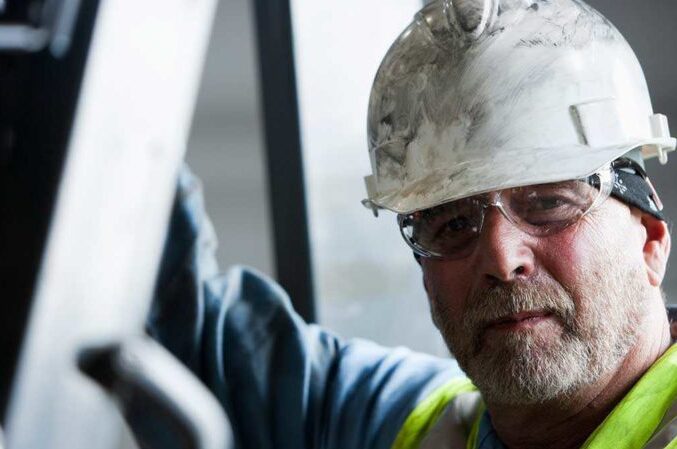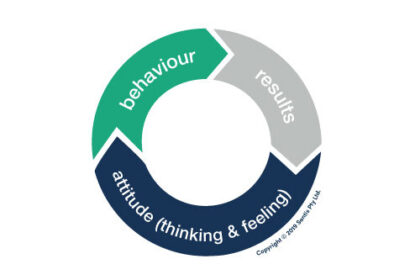As we roll into National Safe Work Month, we’re shining the spotlight once again on the ever-growing importance of workplace safety. This October, we’re being asked to speak up for safety with the theme of the year centred around the notion of being a ‘safety champion’. Given the major issues facing safety in the mining industry, this annual campaign couldn’t have come at a more opportune time.
In the last 12 months within Queensland alone, there have been four fatalities within coal mining, two fatalities in non-coal mining sectors and over 100 mine workers diagnosed with Mine Dust Lung Diseases. Despite vast improvements in safety procedures, policies and operational equipment, we’re still suffering from the worst mining fatality rates in over 20 years.
To make an unfortunate situation worse, the cost of each incident and fatality that occurs within the mining industry extends far beyond the workplace. With each major incident comes the physical and emotional turmoil that the individuals’ respective families, friends, colleagues and communities have to endure. Every heart-breaking incident causes a ripple effect that negatively impacts the lives of everyone they held dear. The impact of these devastating incidents led to the Queensland Government calling for a safety reset to address the rising concerns surrounding safety in the mining industry.
The reset called for a 24-hour stop in production to bring light to the current safety dilemma and opportunities to encourage mine workers to have a two-way conversation with their employers about fatal risks. It was a chance for workers to gain a deeper understanding of the risks involved in their workplace and to raise any safety concerns that they may have. While the initiative was successful in bringing attention to the importance of having open conversations about safety, it also brought another question to the forefront.
With so many advances in the realm of workplace safety, how did the mining industry, and Queensland in particular, end up here?
How did we get here?
From our experience helping organisations improve their safety performance, we’ve found that the results of safety investigations usually indicate that most major safety incidents could have been avoided. The main factors typically come down to whether an organisation’s processes actively address hazards when they’re reported, and whether near misses or minor incidents are accurately reported as they often serve as precursors to major incidents.
While it’s easier to quantify how effectively previous safety reports had been acted upon, addressing the issue of underreporting brings with it a whole new set of challenges. That’s because despite an organisation’s best intentions, it can be difficult to evaluate when underreporting is occurring as it happens beneath the surface. Yet it’s one of the largest factors holding organisations back from optimal safety performance – especially in the mining industry.
Our recent study of 12,460 participants across 9 major industries found that roughly 25% of safety incidents went unreported. Within the mining industry, this number jumped up to a staggering 37%. When we looked deeper into the factors that were driving individuals’ decisions to not report incidents, one key reason stood out from the rest…fear.
The impact of fear on incident reporting
Fear is one of the most powerful drivers of human behaviour and a fear of negative repercussions was listed by over 1 in 3 workers as a key reason for why they chose not to report a safety hazard. Whether it was because they were worried about being labelled a troublemaker, scared that they would be ridiculed for making a mistake or simply trying to avoid being blamed for the issue, the perceived risks involved with making a report were enough to convince them not to.
If your team doesn’t feel safe enough to speak up about safety, then how could you possibly have enough information about the potential hazards that currently exist in your workplace? Without you being aware of it, your workplace could be akin to a ticking time bomb, just waiting for a major safety incident to happen. That’s why as a safety leader, it’s important to think about how you can actively drive a sense of psychological safety and trust between yourself and your team to empower them to start speaking up for safety.
You need to nurture a team of safety champions
In an ideal world, we would hope that all of our workers naturally spoke up for safety. However, the reality is that as safety leaders it’s our responsibility to actively nurture these empowering safety behaviours. Be it through role modelling the behaviours that we want to see or positively reinforcing their choice to behave safely, the decision to actively nurture a team of safety champions could be the defining factor between a series of tragic safety incidents or years of safety excellence. Here are a few key initiatives that you can implement today to get you one step closer to your very own team of safety champions.
1 – Be the safety champion that you want your team to be
As a leader, your team looks up to you as a role model for what’s expected of them in the workplace. So if you want your team to step up to the challenge of being a safety champion, then you need to lead by example by going above and beyond basic safety behaviours. This means setting the standard for improving safety across the organisation, getting involved in safety initiatives and committees and starting conversations about safety. Otherwise, despite your best attempts, you might find your requests falling on deaf ears as your team mirror the less than helpful behaviours that they’re seeing.
2 – Make sure that your team feels safe to speak up
Psychological safety is a crucial requirement for increasing a person’s willingness to speak up for safety and learn from errors. It relates to your workers’ perspectives on whether they’ll experience any negative repercussions for voicing their thoughts and opinions. When trust and psychological safety are low, the perceived risks involved with speaking up for safety are higher, increasing the likelihood of a worker choosing to stay silent about potential hazards. So in order to nurture a team of safety champions, you need to start by actively establishing a strong sense of psychological safety in your workplace. Learn more about how here .
3 – Positively reinforce their choice to speak up
On the other side of negative repercussions are positive outcomes such as rewards and social recognition. While it’s easy to fall prey to the idea that being too liberal with rewards and recognition turns a leader into a proverbial ‘Mr. Nice Guy’, the reality is that positive reinforcement is a very powerful tool for influence. Providing positive feedback when your workers choose to speak up for safety helps tilt the scales in your favour by increasing the likelihood of them repeating that behaviour when they come across other hazards in the future.
Help your team of safety champions harness their voice
While the positive messages behind Safe Work Month are a great place to start, it’s more important than ever to ensure that as a safety leader, you’re actively encouraging your team to speak up about safety throughout the year. While it’s easy to point the finger at workers who aren’t actively speaking out for safety, the reality is that the responsibility of developing an environment that makes them feel safe enough to do so rests in your hands.
So this Safe Work Month, our question to you is: What are you going to do to encourage your team to stand up as Safety Champions, now and into the future? Because the first step in having a team of safety champions starts with having a strong safety leader.




